With summer here and wildfire season around the corner, it’s time to start thinking about landslide safety in your community. Leighton can help you assist with necessary landslide repair in your area.
For more than 62 years, Leighton has been the industry leader by integrating geotechnical engineering and engineering geology disciplines required for landslide characterization, stabilization, and repair. In January of 2023, there were 600 landslides reported in California in a period of less than three weeks. The rainy weather persisted through spring, leaving California communities vulnerable to continued landslide activity in the months to come.
Our team has extensive experience in site characterization, steep slope assessment, and development of rockfall mitigation and safety measures, including the use of Geobrugg tensioned TECCO systems. Our Geotechnical Engineers can prepare assessment and mitigation reports to include grading plans and specifications encompassing all aspects of remedial earthwork, soil nail and/or tie-back design, conventional shoring to reestablish roadways, and safe utility corridors, or to support existing structures with underpinning. Leighton is also proficient in designing slope stabilization buttresses and other earthwork solutions to support all aspects of design.
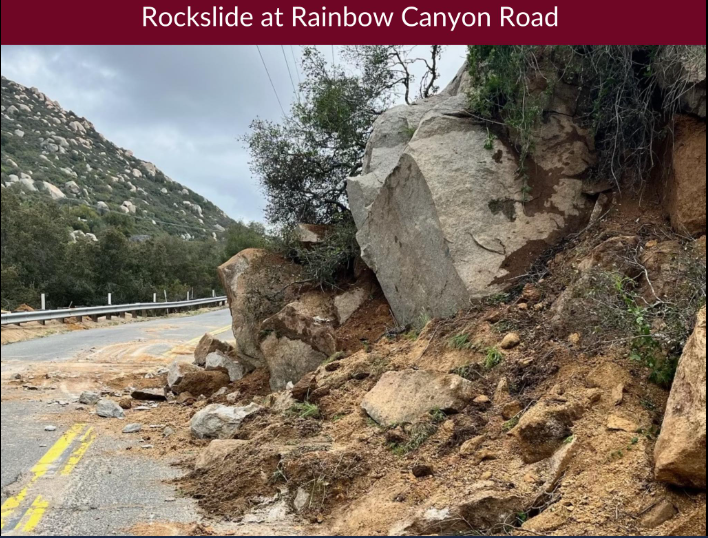
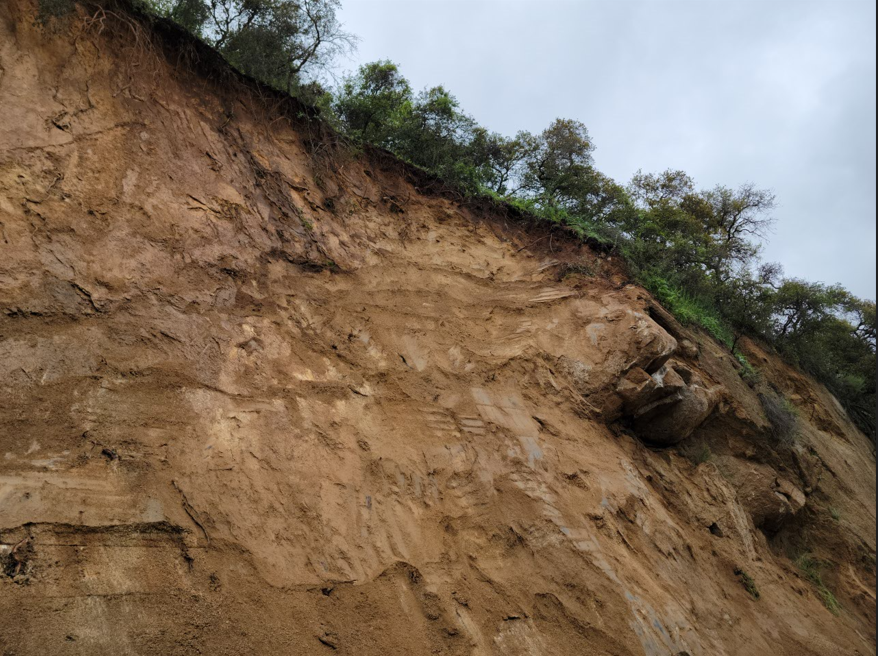
Rainbow Canyon Road Landslide, Temecula, CA
In March 2023, after weeks of heavy rainfall, a portion of the slope ascending from Rainbow Canyon Road in the City of Temecula failed, resulting in a rockfall blocking a lane of traffic. Leighton was able to quickly respond to the emergency, providing geologic mapping, and observation. The upper portions of the failed slope were near vertical and likely to collapse due to further erosion or vibrations from ongoing traffic. Our team provided hazard mitigation recommendations for emergency repair efforts including cutting back the uppermost 5 to 7 feet of the slop to a 1:1 inclination and removal of a protruding boulder that was greatly undermined during the rockslide.
After the emergency was addressed, the City requested that our team conduct a broader assessment along the entire road alignment to develop a long term plan to mitigate potential future issues. Ultimately, the surrounding slopes did not present an immediate or imminent rockfall hazard, but proactive mitigation methods were suggested to ensure future stability.
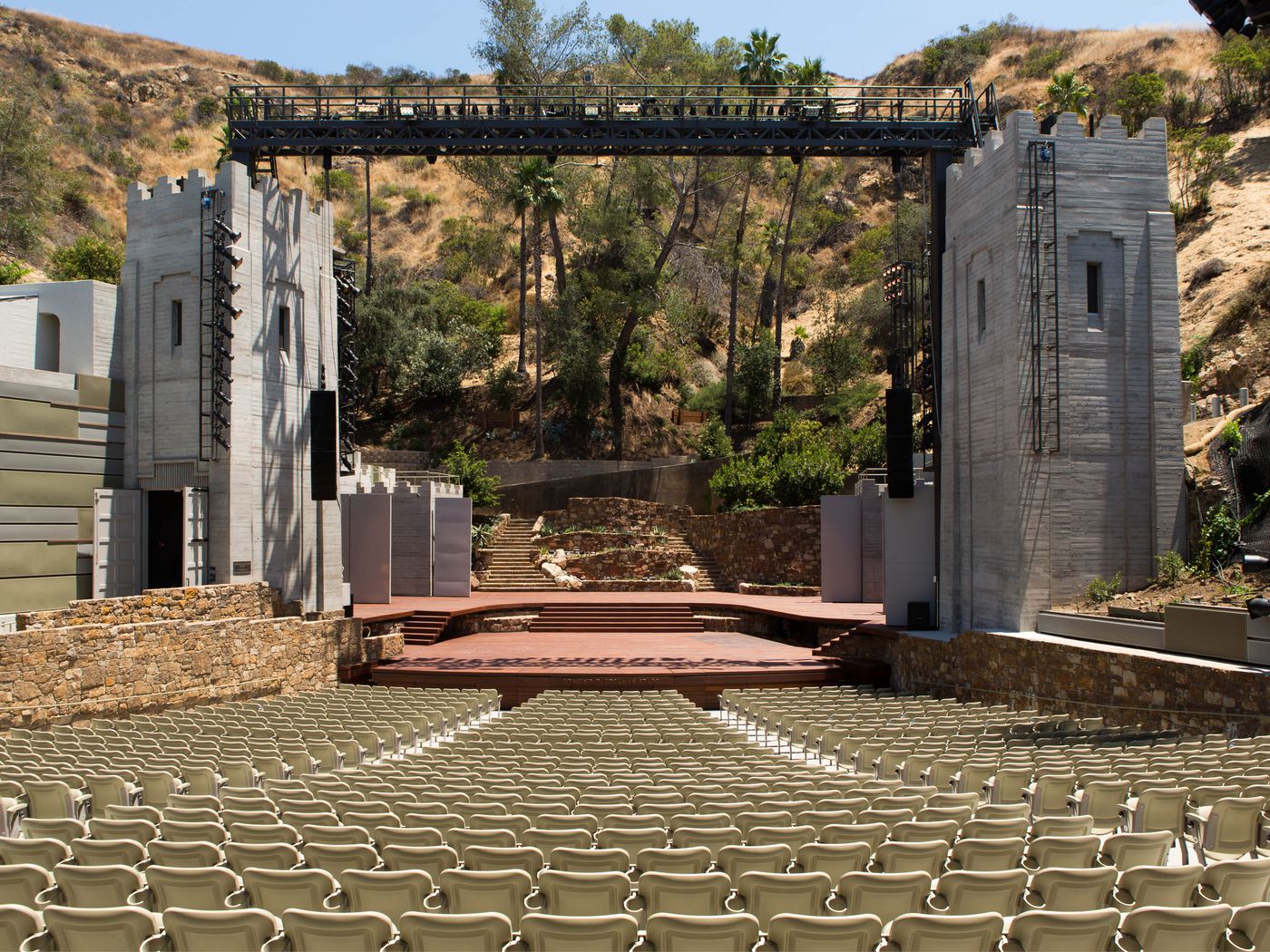
John Anson Ford Amphitheater | Hollywood, CA
The John Anson Ford Theatre recently completed an over $20-million-dollar off-season improvement project that spanned the course of 2 years. Leighton provided design and construction oversight during the duration of the project, as well as geologic mapping, geotechnical analysis, and construction inspection
The John Anson Ford Theater is situated within the Hollywood hills in a rugged canyon where natural erosion has created steep-sided cliffs and manmade forces, through blasting, shaped the canyon to accommodate construction of the theatre in the early 1920s. Surrounded by basaltic and metasandstone rock outcrops this former ocean seafloor during tectonic uplift was tilted and deformed creating regional and localized fracturing and jointing that coupled with severe near-surface weathering has made the bedrock material susceptible to rockfalls and topples. Rockfall and debris flow potential at the Theatre posed a threat to both life and property.
During construction of off-season improvements, a fire destabilized of the surrounding hillside, loosening material on the rock slope face southeasterly of the amphitheater seating area resulting in rockfall into the amphitheater. Our team worked to characterize rock in order to design rockfall mitigation and prevent rockfall from impacting the new improvements and patrons at theatre events. Leighton provided geologic oversight and engineering review during installation and performance testing of a Geobrugg tensioned TECCO system at Ford Theatre.
Leighton also provided design and inspection services for rock fall mitigation and safety measures. In order to mitigate the potential damage caused by rockfalls, Leighton recommended rock scaling of visible loose material on the site slopes and the installation of a flexible barrier to contain rockfall debris. Ultimately, a rockfall attenuation device was installed consisting of a barrier fence with concrete-filled bollards connected by heavy gauge stainless steel cables.
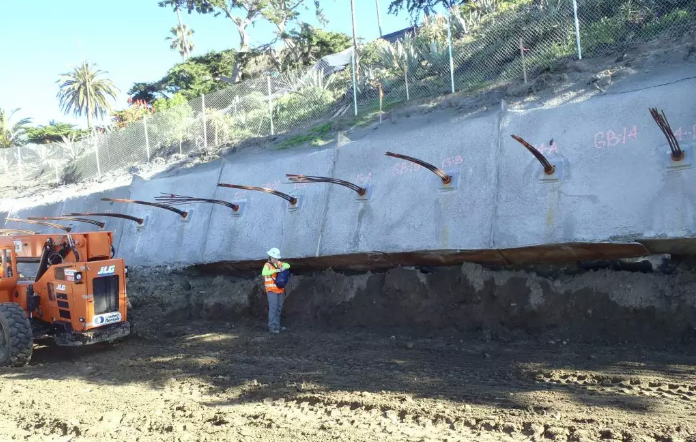
Mile Post (MP) 206.8 Emergency Railroad Track Stabilization, San Clemente, CA
Constructed along the base of a coastal bluff, this stretch of railroad was built on an ancient landslide which was reactivated due to significant beach erosion in 2021, damaging several nearby homes and moving the tracks more than two feet laterally towards the Pacific Ocean. Temporary stabilization and realignment were achieved by placing 18,000+ tons of riprap along 700 feet of track, but in 2022, in response to high tides, waves, and storm surges, the landslide began moving again and rail services were halted so that more permanent repairs could be made.
At OCTA’s emergency request, Leighton provided accelerated design review of a proposed ground-anchor system to be installed to stabilize a slope adjacent to the right-of-way at MP 206.8. The project was built in two phases of ground-anchor installation. The first phase included the installation of temporary ground anchors to stabilize the slope for the short-term using readily available materials. The second phase designed and installed permanent ground anchors that were engineered for long-term applications. The ground anchors consisted of either strands or bar anchors that were grouted beyond the failing wedge and pre-stressed to apply a resisting force to a series of concrete/steel slabs installed at the ground surface. This system is used to retain the soil in place along the slope failure plane. Leighton’s scope of services consisted of review of project background data, field reconnaissance, review of slope stability and ground anchor design package, review of anchor test data, meeting attendance, and report preparation.
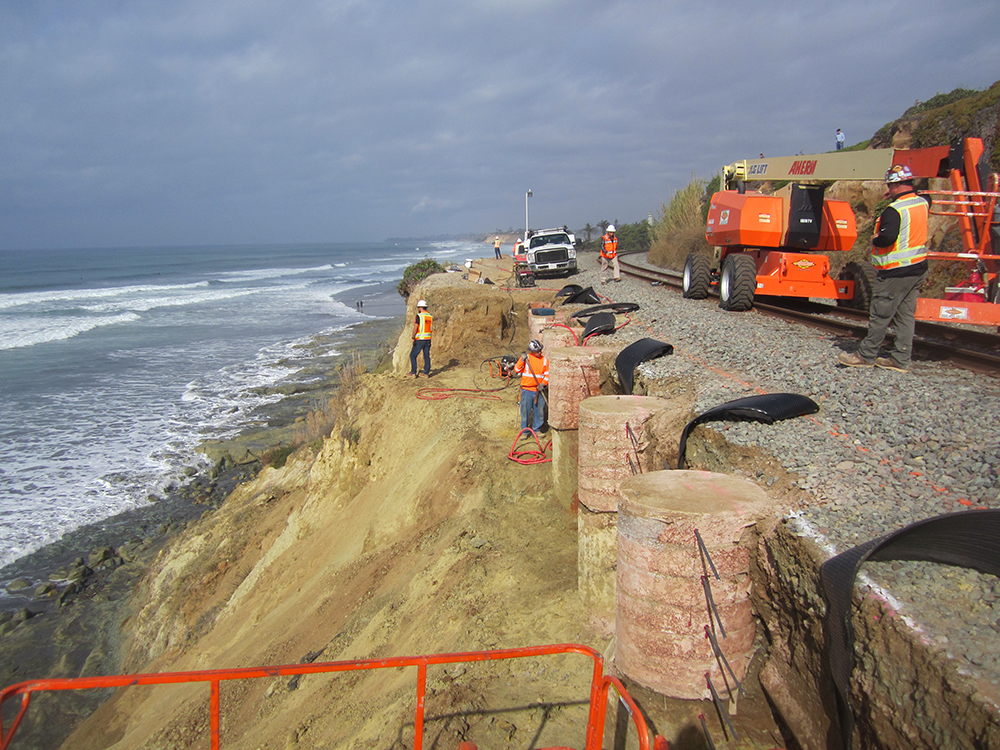
Del Mar Bluffs Stabilization, Del Mar, CA.
In 1998, NCTD initiated a multi-phase approach to preserving the trackbed along the Del Mar bluffs. To date, significant field investigation and geotechnical studies have been completed by Leighton which characterized the nature and cause of bluff erosion. These studies continue to serve as the baseline for analysis of ongoing bluff retreat and preliminary design of stabilization improvements. In general, the bluffs are expected to retreat at an annual average rate of up to 6 inches per year. The retreat occurs episodically, rather than at a uniform rate, over the length of the bluffs i.e., block failures of several feet in depth may occur over fifty linear feet of bluff. Factors influencing bluff retreat include the composition of geologic stratigraphy, wind, wave action at the toe of the bluff, , concentrated surface water runoff and subsurface water seepage along with manmade trails and rodent burrows focusing water energy. Several projects have been completed to stabilize the bluffs and provide additional trackbed support since 1998.
Similar to any large construction project on the California coast there were concerns over the impacts to the environment and coastal processes. Leighton was chosen to present the project to the Del Mar City Council, NCTD Board of Directors, and the California Coastal Commission where the need for the project and its full extent were explained. After careful consideration by the governing agencies approvals for the projects, DMB1, DMB2 and DMB3 were obtained.
As background, one of the primary goals was to stabilize as much of the bluff as possible. As a result a wide variety of stabilization measures were reviewed and analyzed. These included such things as sand replenishment and bluff toe protection. These types of alternatives protected the toe of the bluff but did not increase stability of the upper portions of the bluff and as a result were dismissed. Leighton analyzed mass grading to stabilize the bluff; however, environmental impacts were too great, as this option would change the geomorphic structure of the bluff. In between, various combinations of sea walls, soil cement buttresses, and soil nails were evaluated along with their individual impacts. In the end, the engineering option selected included a series of soldier piles with tie backs that could be installed from within the right of way at the top of bluff and would not damage the natural contours of the bluff, or interrupt rail services.
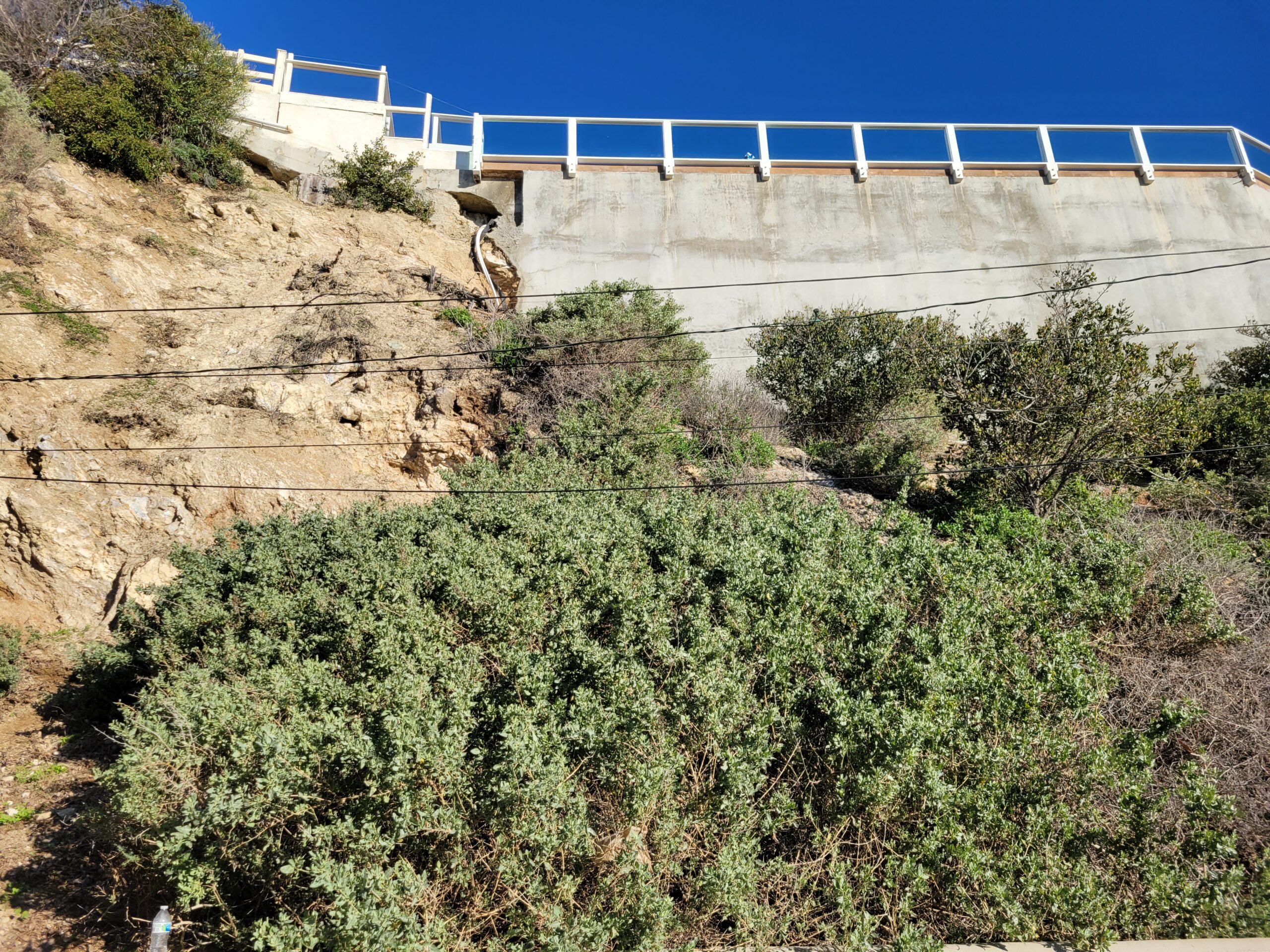
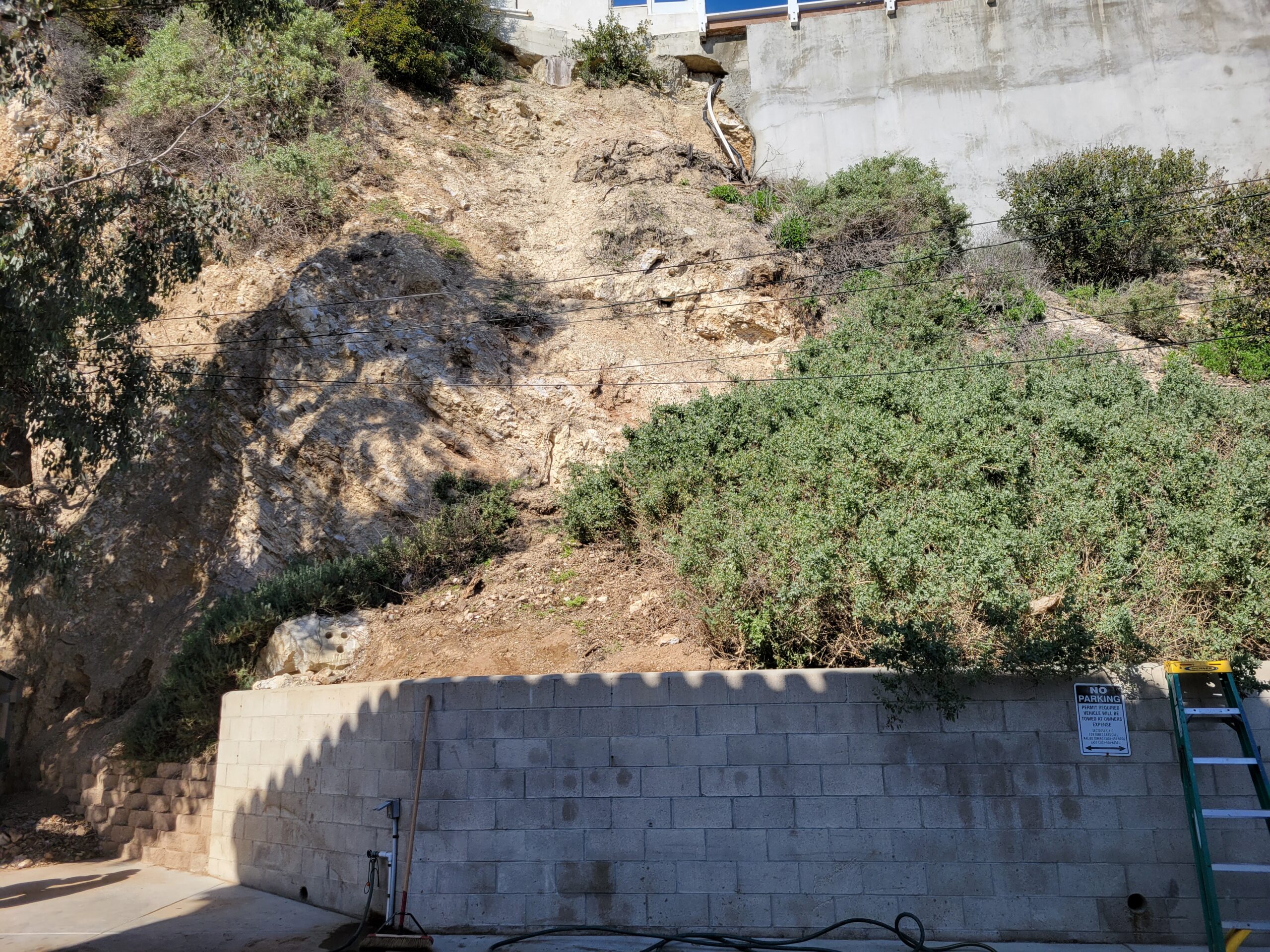
Rockfall Mitigation Project, Los Angeles County, CA.
A significant rain event in February 2019 triggered soil slip debris flow on a slope located behind the subject residence impacting its structural integrity. In order to collect sufficient geologic input parameters that could then be used to design an appropriate rockfall mitigation device, Leighton conducted field exploration services, including geologic mapping of joint sets, faults, and fractures; slope irregularities; and rock coring.
Leighton professionals documented the shape, size, estimated volume and composition of rocks within the slope, including a description of rockfalls, pop-outs and wedge failures that occurred. Cores were recovered to aid in characterization of the bedrock according to rock type, lithology, relative hardness, degree of weathering, planar discontinuities, color and other relative geologic characteristics, i.e. seams, mineralization, etc. Our team also provided geotechnical laboratory testing and prepared a geologic investigation report summarizing the geologic conditions of the slope to aid in the design of Geobrugg TECCO Mesh.
Our team recommended the following remedial tasks and design components prior to and as part of this slope mitigation:
- Rock Anchor Pull Tests: Sacrificial rock anchors to be installed and pulled to failure as a basis for rockfall remediation revetment design.
- Exposed Loose Rock and Colluvium Scaling: Highly controlled removal of loose sections of granitic outcrop as to prevent failure impact to the residence.
- Drainage Diversion: The construction of a reinforced concrete “V”-ditch at the northeastern property line, draining to a down-drain along the west property line to Hollywood Boulevard.
- Rockfall Revetment: Installation of a rock fall revetment such as a Geobrugg or equivalent anchored active and draped mesh system.


